Characterizations of Magnesia Brick
Articles
A combination of four articles will go over magnesium the element and the production of magnesia refractory products. This is Part 3: Magnesium Oxide Refractories
Part 1 Magnesium the Element
Part 2: Subtle role of Calcium in Magnesia Refractories
Part 4: Magnesia with Various Spinels
Characterizations of Magnesia Brick
There are five key properties. As we have already discussed, magnesia bricks have overall high melting temperatures. Second, magnesia bricks have high resistance to iron oxide. Magnesia has a huge capacity to absorb divalent iron oxide in solid solution without a change in its volume. This is why magnesia brick is favored in metallurgical furnaces. Most metal ores as mined are associated with iron. Magnesia brick also has excellent alkali resistance. Magnesia is noted for high rates of reversible thermal expansion as well as high thermal conductivity, which makes magnesia bricks poor insulators.
What characterizes magnesia brick?
- High melting temperatures
- High resistance to iron oxide
- Absorbs divalent iron oxide
- Excellent alkali resistance
- High rates of reversible thermal expansion & thermal conductivity
Burned Magnesia Brick
PERECON is our selection for its hydration resistance. Most commonly used in the construction of brick sub-hearth in an electric arc furnace. The hearth is constructed of monolithic material that is installed using water. You have contact with iron so you want a refractory that can tolerate lots of iron and iron oxide.
Primary uses of burned magnesia brick:
- Steel furnace linings – including hearths of EAFs and safety linings in BOFs
- Copper reverberatory furnace hearth
- Vertical lime kiln burning zones
- Glass tank regenerator checkers

Additionally, you don’t need a lot of strength in a hearth.
If we are trying to fill a glass tank regenerator with checker brick that must bear a heavy load, OXILINE H is our product. OXILINE H fills that bill with great alkali resistance and lots of strength to bear the heavy load.
Calcium Oxide Refractories
Calcium, as you recall, is the alkaline earth element just below magnesium in the periodic chart. Calcium oxide refractories are more commonly known as burned dolomite brick, as dolomite is one-part calcium oxide and one-part magnesium oxide.
Think of a dolomite brick as a magnesia brick with a lot of lime around. Dolomite brick can also be unburned that is carbon bonded. Unburned dolomite brick uses an organic resin as the bonding agent. Dolomite refractories are most effective against high lime content slags and liquids. High lime content slags can be found within Portland Cement clinker, Basic Oxygen Furnace (BOF) slags, steel ladle slags, Argon-Oxygen Decarburizing (AOD) vessels.
Both BOF slag and Portland Cement are high lime basic in nature, with over 40% calcium oxide content. Dolomite brick is very compatible with these limey melts.

Two popular Resco-made dolomite brick brands are Z-DOL and KD65-DOL. Z-DOL is used for Portland Cement kiln burning zones. Z-DOL contains mostly dead-burned dolomite, but also has a pinch of zirconia for better thermal spalling resistance. KD65-DOL is commonly used in AOD vessels. KD65-DOL, as you see, contains more magnesia than Z-DOL, so we would term this a magnesia-enriched burned dolomite refractory.

